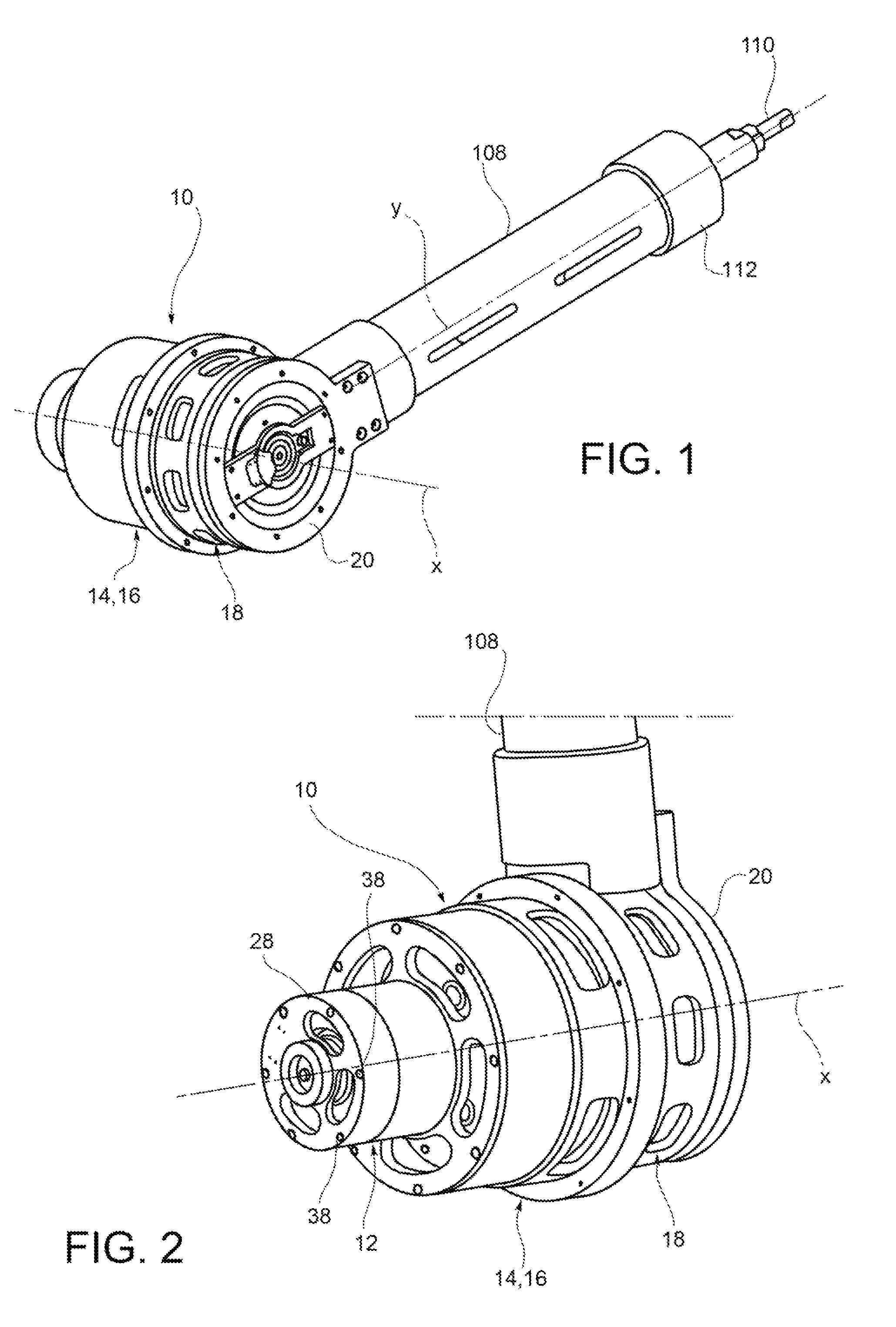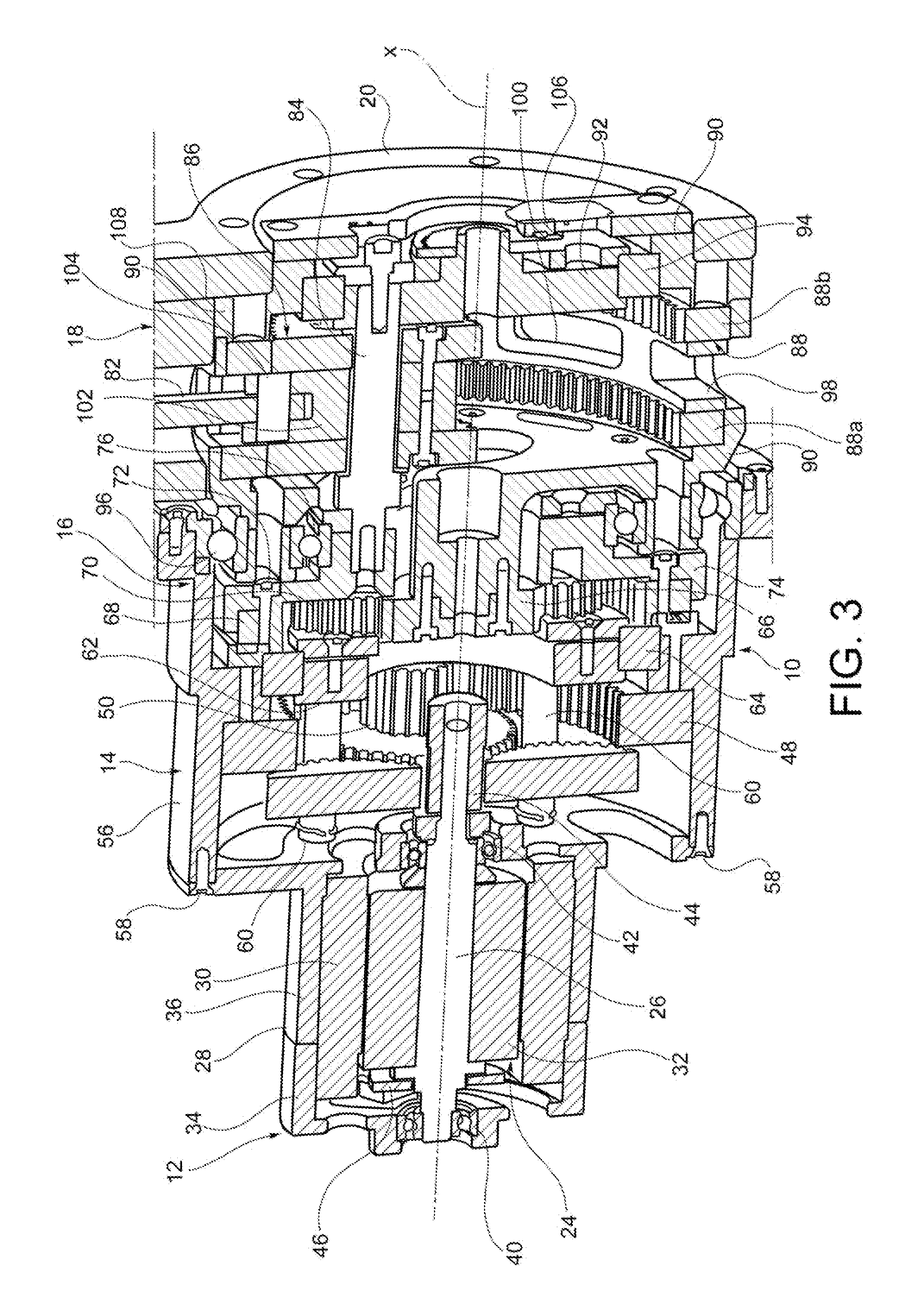Elastic rotary actuator
a rotary actuator and elastic technology, applied in the direction of mechanical control devices, instruments, couplings, etc., can solve the problems of unsuitable for this type of control, inability to handle delicate non-modelled objects with precision, and limitations of rotary actuators used today, so as to achieve the effect of higher performan
- Summary
- Abstract
- Description
- Claims
- Application Information
AI Technical Summary
Benefits of technology
Problems solved by technology
Method used
Image
Examples
Embodiment Construction
[0029]With reference initially to FIGS. 1 to 3, elastic rotary actuators according to certain embodiments of the present invention are generally indicated 10 and may include a motor unit 12, a reduction unit 14, a differential unit 16, an elastic unit 18 and an final output member 20, the final output member 20 being supported rotatably about an axis of rotation x and being intended to be connected to an external load (not shown), the motor unit 12 being designed to generate a rotary movement about the axis of rotation x, and the reduction unit 14, the differential unit 16 and the elastic unit 18 being arranged axially (where the term “axially”, as well as the term “axial”, are used here to indicate the direction of the axis of rotation x) in that order between the motor unit 12 and the final output member 20 so as to transmit to the final output member 20 the rotary movement generated by the motor unit.
[0030]With reference in particular to FIG. 3, the motor unit 12 may include an e...
PUM
 Login to View More
Login to View More Abstract
Description
Claims
Application Information
 Login to View More
Login to View More - R&D
- Intellectual Property
- Life Sciences
- Materials
- Tech Scout
- Unparalleled Data Quality
- Higher Quality Content
- 60% Fewer Hallucinations
Browse by: Latest US Patents, China's latest patents, Technical Efficacy Thesaurus, Application Domain, Technology Topic, Popular Technical Reports.
© 2025 PatSnap. All rights reserved.Legal|Privacy policy|Modern Slavery Act Transparency Statement|Sitemap|About US| Contact US: help@patsnap.com



